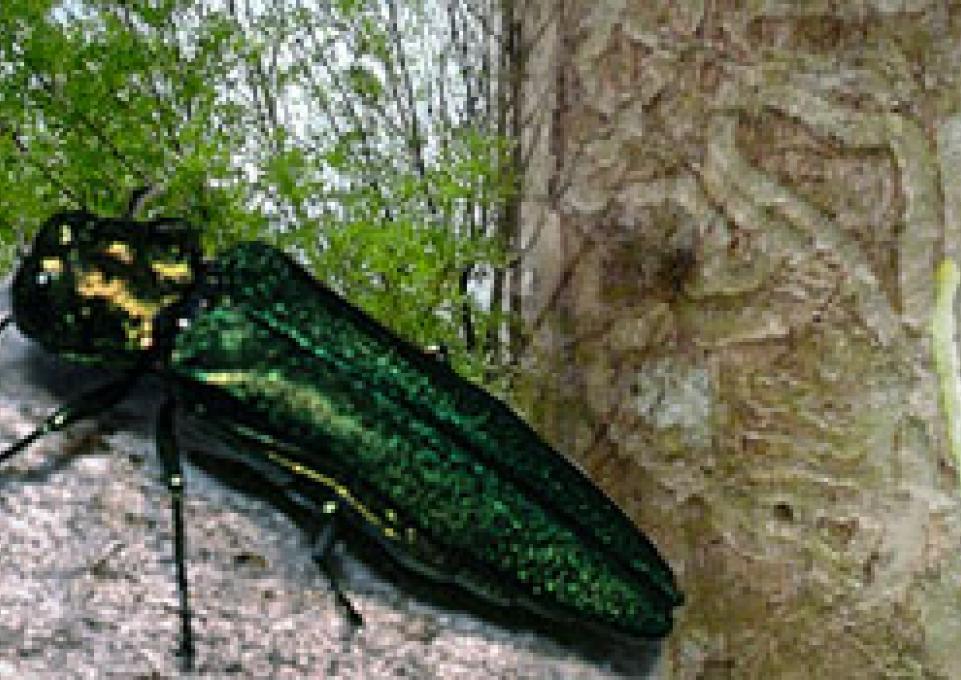
The Great Lakes Center at SUNY Buffalo State received a five-year, $1.1 million grant from the New York State Department of Environmental Conservation. The grant sets up a Partnership for Regional Invasive Species Management (PRISM) office in Western New York, one of eight such partnerships across the state.
 Christopher Pennuto, research scientist with the Great Lakes Center and professor of biology, is the project’s director. “The office will serve as a clearinghouse for all information pertaining to invasive species in Western New York,” said Pennuto. “Broadly speaking, the PRISM office will be a go-to place for the public to get information about invasive species in the region.” The region includes the eight Western New York counties (Allegany, Cattaraugus, Chautauqua, Erie, Genesee, Niagara, Orleans, and Wyoming).
Christopher Pennuto, research scientist with the Great Lakes Center and professor of biology, is the project’s director. “The office will serve as a clearinghouse for all information pertaining to invasive species in Western New York,” said Pennuto. “Broadly speaking, the PRISM office will be a go-to place for the public to get information about invasive species in the region.” The region includes the eight Western New York counties (Allegany, Cattaraugus, Chautauqua, Erie, Genesee, Niagara, Orleans, and Wyoming).
Invasive species are defined as organisms that have been introduced outside of their native range, have become established, and cause or are likely to cause environmental or economic harm. The project addresses all aquatic and terrestrial invasive species, both plant and animal, with the goal of managing such species, and, where feasible, eradicating them. Pennuto has conducted extensive research on invasive species in Lakes Erie and Ontario and tributary streams.
“We will establish a surveillance network, perform training, arrange workshops, and develop a volunteer team for monitoring invasive species,” said Pennuto. The office will also coordinate activities of existing environmental groups that are addressing invasive species and the ensuing environmental damage.
For example, the emerald ash borer (pictured at top) is an insect that threatens all species of ash tree in Western New York. ”Loss of significant ash tree cover will have noticeable economic impacts to the wood products industry, municipalities, nursery operators, and property owners,” said Pennuto. “The loss of ash trees also will have ecological implications for secondary understory invasions and successional changes as forest gaps open, for riparian and stream function as temperature regimes change, and for overall forest dynamics as nutrient cycling and decomposition rates change.”
Another potentially disastrous invader is the aquatic plant Hydrilla, which can grow as much as 12 inches a day. “It has recently been documented in Tonawanda Creek,” said Pennuto. “It grows extremely fast, completely filling in waterways and lake bays where it takes hold.” It poses a threat to aquatic life and water quality, and hurts boating and fishing.
“Buffalo State is uniquely qualified to administer and house the Western New York PRISM office,” said Alexander Karatayev, director of the Great Lakes Center. “We are located in the largest population center in the region, our waterfront field station gives us access to its major waterways, and we have the experience necessary to manage large conservation initiatives.” Karatayev is known internationally for his research on aquatic invasive species and on methodologies to further understand “invasion biology”—the study of how non-native species proliferate and threaten native ecosystems.
The funding for the project was provided from the New York State Environmental Protection Fund as administered by the New York State Department of Environmental Conservation.
